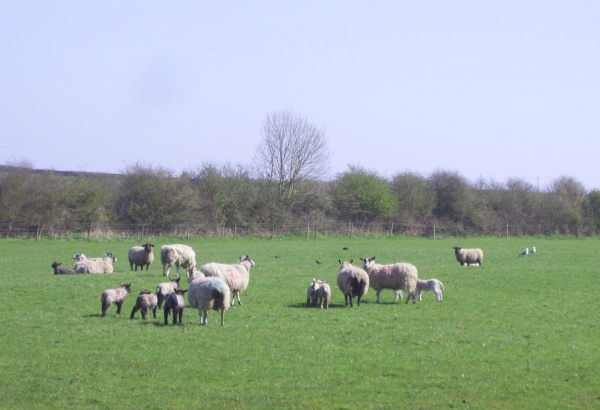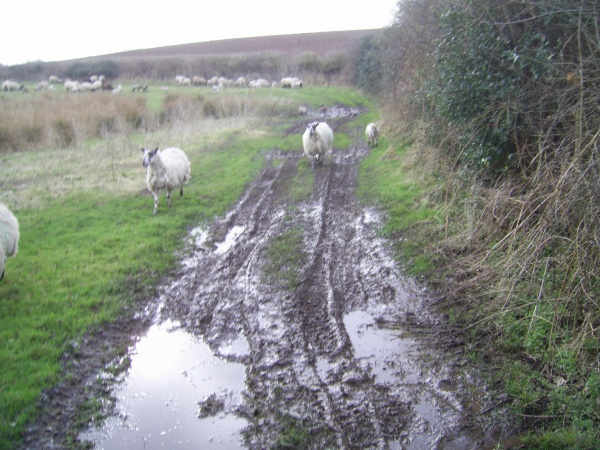
Well we’ve about made it. There are definitely two left to lamb but they could take a fortnight to make their minds up. Then there are three hoggs who might possibly be in lamb but again they could be even further off.
So the curtain may not have come down on the show, but in reality, we’ve moved on.
I think three brief sketches will sum up where we are. As you can see, the blackthorn is in flower, and this morning as I was feeding one group of ewes and lambs I caught the scent of gorse. It hung heavy in the air by the hedge. Grass is definitely growing faster than it’s being eaten, the ground is drier than it was last week and whilst Sal might find herself being harassed by frolicking lambs, the ewes by and large seem to ignore her as a threat. I think they have the feeling that, if Sal is a threat, the lambs can now run faster than the ewes can, so they’re big enough to cope on their own.
We’re moving onto a new season’s problems. One ewe was looking a bit dopey in a field. (Even by the undemanding standards of sheep she didn’t look bright.) The problem with herd animals generally is that they make a point of not looking ill. If you look ill or weak you’ve marked yourself out to the world as a viable target who isn’t going to run as fast as the rest of the herd or flock. Hence sheep make a point of looking really fit and well until absolutely the last minute.
Now she wasn’t well, and was admitting it, I could catch her and see what was up. What seems to have happened is she got an orf infection on one teat which made the teat sore, and this meant she wasn’t happy at the lambs sucking that teat; this in turn meant that it wasn’t sucked out and she got mastitis in it. This needn’t have taken more than a couple of days to happen.
So she needed treatment and needed to come home. It was a doddle getting her into the trailer behind the quad, but catching the lambs was another matter. We couldn’t catch them, they wouldn’t follow and we couldn’t drive them. Fortunately we managed to cut an elderly Leicester ewe and her lamb out of the rest of the flock. She was sensible and allowed herself to be driven, and her lamb and the two others stuck with her on the grounds she probably knew what was going on. So eventually we got everybody home.
And one more glimpse of how things are. You’ll have doubtless seen plenty of pictures and films about lambs gambolling and frolicking. Last night about 9pm when it’s still light I went out just to make sure one of our two remaining lambing ewes hadn’t surprised us with a happy event. Out in the field behind the buildings I noticed that some of the hoggs who’ve lambed were also feeling the joys of spring. They too were gambolling and frolicking, with their lambs trying to keep up.
Obviously it’s difficult for a lamb to run when it’s trying to look stern and say, “Mum, honestly, behave!”

♥♥♥♥
Now in paperback and ebook format
As a reviewer commented, “This book charts a year in the life of a Cumbrian sheep farmer. It’s sprinkled with anecdotes and memories of other years. Some parts (especially when featuring Sal, the Border Collie) were so funny as to cause me to have to read them out loud to my husband. It’s very interesting to read these things from the pen of the man who is actually out there doing it – usually in the rain! A very good read.”





